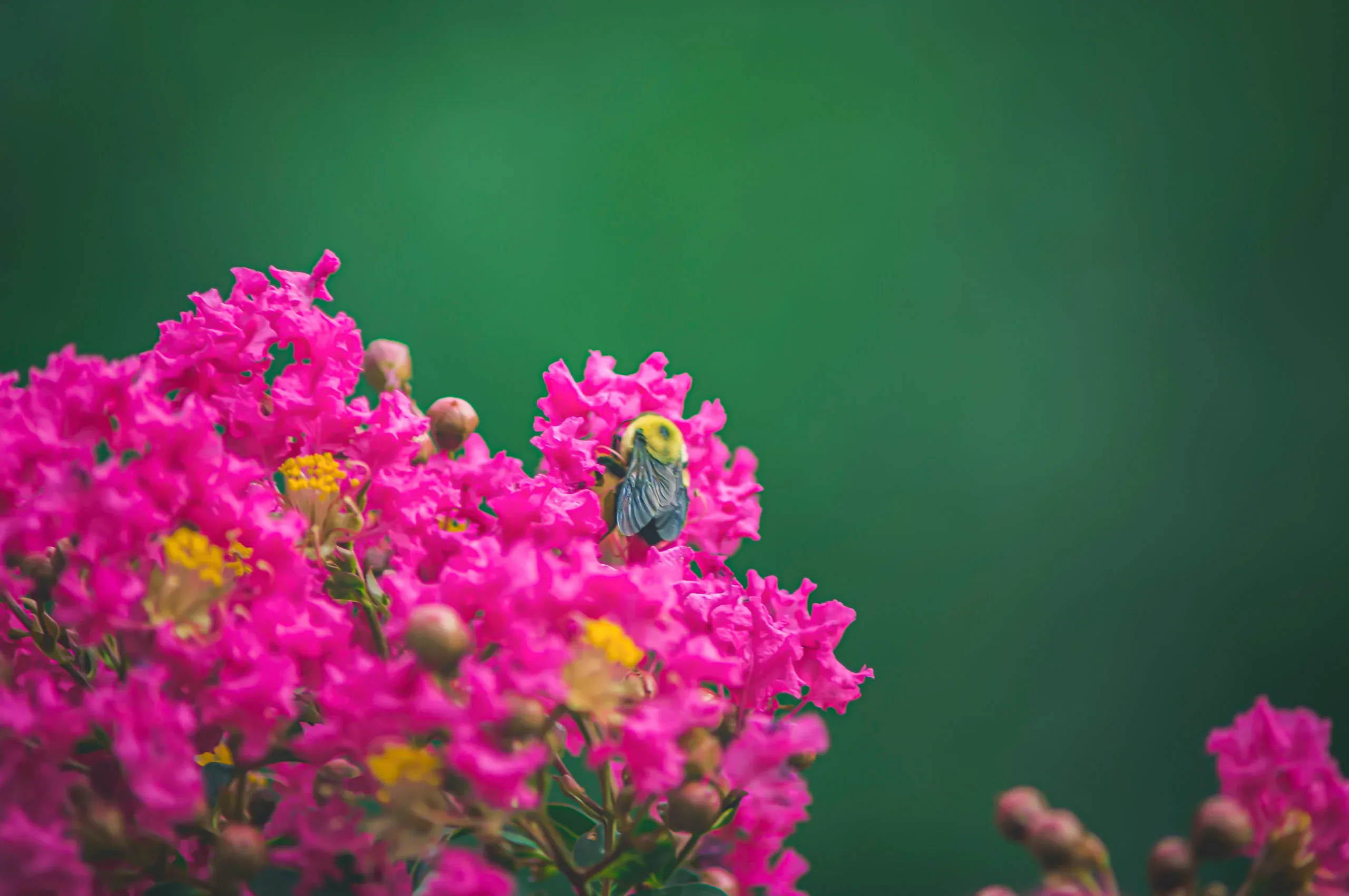
Planting Guides How to Plant Crape Myrtle Trees
Crape Myrtles are one of the best trees for summer flowering. They come in a wide variety of colors and heights, but they all have very much the same needs when it comes to planting them. Your new Crape Myrtles have arrived and you are about to plant them. This guide will give you directions, tips and ideas for giving your tree the best start in its life with you.
In a Nutshell
– Remove all packaging
– Water the tree in its pot
– Choose a suitable planting site for the needs of your tree
– Prepare the soil
– Dig a hole the depth of the pot
– Put the tree in its hole and replace most of the soil
– Water well, let the water drain and put back the rest of the soil
– Put a mulch around your tree and water regularly
Getting Your Crape Myrtle Trees Ready to Plant
The very first thing to do is un-wrap your trees. Remove all the wrapping materials, remove the trees from
the box and remove any wrapping around the trees themselves. Leave the tree in its pot until you are ready to plant.
If you receive your trees in winter – which is a great planting season as long as the ground is not frozen – then of course they will have no leaves on them. That is normal – as soon as spring comes your tree will send out its fresh, new leaves and begin to grow.
Move your plant around by picking up the pot – do not lift it by the trunk or stem.
Care Before Planting Time
Your trees have been on a journey and they will be a little stressed, so place them in a shady part of your garden and give them a good watering. Do not put them in the garage, a shed or in the house, even if it is cold outside. After a couple of days in the shade, move your trees to a sunny location, they will live happily in pots for some time as long as you care for them. Remember to water every day or every second day, depending on how warm the weather is – do not let the pot become completely dry, but don’t water a pot that is already damp. If it does become very dry, place it in a bucket and half-fill the bucket with water so that the soil can soak completely.
Choosing a Planting Location
Crape Myrtle Trees need plenty of sun, so choose a bright sunny spot for your planting. They are idea for those hot, dry places where other plants do not thrive, so take advantage of that and use them in places that can be hard to fill. They will grow in shadier spots too, but you will get fewer flowers the shadier it gets.
If you are planting a screen, remember that if you plant right on your property line your neighbor has a legal right to cut back your tree to the property line, which may not look very nice, so plant well inside your property so that you have control over the growth and pruning of your tree. Allow at least three feet back from that line – for larger types of Crape Myrtle five feet is better.
Setting Out Your Planting
If you are planting a screen of Crape Myrtles, space the plants according to how tall they will become. If they will grow over 20 feet tall, allow six to eight feet between each plant. For smaller plants allow four to six feet and if you are planting a low hedge of very small varieties, allow two to three feet.
If you are planting against a fence, plant at least three feet from the fence, not right up against it, or your plants will not be bushy right to the ground.
For a more solid screen you can even plant a double row, staggering the plants in each row. Place the rows three feet apart and the plants between six and ten feet apart in the rows, depending on their final size.
For a group planting of smaller varieties, space them 75% of the final width apart. So if each plant will grow four feet wide, plant three feet apart. This will create an attractive solid group.
Preparing the Planting Site
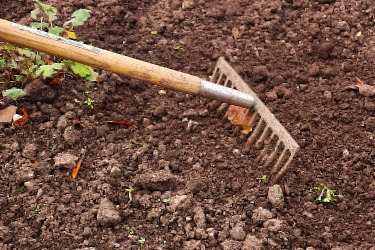
You goal is to make a large area of looser soil that the young roots can penetrate easily, getting food as they go and establishing quickly. You need to have an area at least three times the diameter of the pot, dug as deep as your spade will go. Add some organic material to the soil as you dig. Almost any kind of organic material is good, among the best are well-rotted animal manure; garden compost; any ‘top-soil’ from a garden center; or peat-moss. A bucket per tree is about right, but less is OK too, Crape Myrtles are tough plants.
In addition, trees need fertilizer to help develop their roots. This can be rock phosphate or bone-meal or any kind of superphosphate. There are many ‘tree planting’ fertilizers available too and they all work well, so whatever is available will be fine.
Remove roots of weeds from the area and any stones bigger than your fist. Smaller stones can be left and it is not a good idea to sieve the soil to remove smaller stones they are best left in and can help with drainage.
Turn over the soil, mixing the organic material and fertilizer into it and then level it off and get ready to plant. Save some of the organic material you used to mulch your tree after planting.
Preparing the Tree
The evening before you are going to plant, give the pot a good soaking with water. If the root ball is dry when you plant, it may stay that way and cause your tree to suffer from dryness even if the surrounding soil is damp.
Digging the Hole
Now dig a hole in the exact spot where you want your tree to be, making it twice the diameter of the pot, but only just as deep. If you have dug the soil deeper than that, use your foot to press down the soil in the bottom of the hole, to form a firm base beneath the tree. This is to prevent it from sinking deeper than you want in the hole after you have planted it.
For row planting of smaller varieties it can be easier to take out a trench along the planting line, rather than dig individual holes.
Removing the Pot
Take your tree to the planting hole and slide the pot gently off. You may need to tap the edge a couple of times to release the roots, but it should slide out pretty easily. Usually there will be plenty of roots filling the pot and the root-ball will stay together and not fall apart at all.
If it looks like the soil is going to fall off the roots, don’t worry, that is easily dealt with. If you tree is dormant, with no leaves, then just let any extra soil fall into the planting hole. If your tree is growing, with green leaves, then leave it in the pot, take a sharp knife and cut around the bottom of the pot and remove the base. Then get someone to hold the pot together while you cut down the side of the pot. Tie a piece of string around it to hold together while you plant.
Planting Your Crape Myrtle Tree
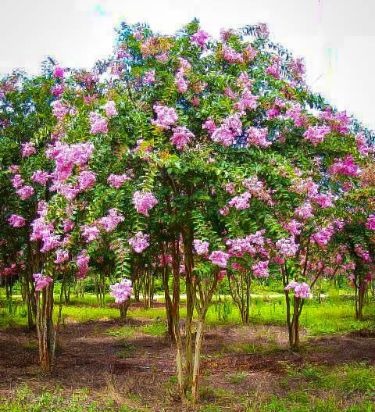
Replace about three-quarters of the soil in the hole, pressing it down around the roots of your tree. If you have left the pot on, do the same thing, but when you have finished, cut the string holding the pot together and gently work the cut pot out of the soil. Finish firming down the soil – a gentle foot pressure or firm hand pressure is about right.
Watering Your Tree
Now fill the hole with lots of water, letting it soak down into the ground and into the root ball. Use plenty of water and then wait until it has all drained away. This will give plenty of water around the roots, where it is needed.
Finishing the Planting
Now put back the rest of the soil, firming it gently down. Make sure you have only covered the top of the root ball with a very little soil, or no soil at all. If you can still see the top of the root ball, that is fine – crape myrtles do not like being planted deeply in the ground.
Make sure the soil is not sloping away from the tree, but flat, so that when you water it will stay around the tree, not run away. Some gardeners like to make a low wall of soil around the tree, at a spot about twice the diameter of the pot, to retain water. This is a fine thing to do, but not absolutely necessary. Put a layer of organic material over the root area, two to three inches deep and then water the whole area thoroughly.
Planting in a Container
Crape Myrtle trees grow well in pots or planter boxes and they will live for many years in a large pot. Make sure the container you choose has drainage holes, this is vital. Use a soil for outdoor planters from your local garden center or add some shredded bark, perlite or Styrofoam chips to regular potting soil, about 1 part to 4 or 5 parts of potting soil is ideal. This will improve the drainage and protect your plants from ‘wet feet’. Cover the drainage holes with a small stone and use soil right to the bottom of the container – a layer of gravel is not a good idea and does not improve drainage.
Make sure your container is large enough for there to be soil beneath and around the root-ball. Only cover the root-ball with less than an inch of soil. Water the container thoroughly after planting and then whenever it is dry several inches down in the pot. Apply a tree fertilizer each spring, or use a liquid fertilizer regularly as directed on the container. Leave your tree outdoors in the winter; it needs a period of cold weather. If you live in zone 5 or 6 it is a good idea to bring the dormant tree into an unheated shed or garage to protect it from cold damage, since the roots are damaged by cold easier than the branches are. An alternative method of protecting the roots is to dig a hole in the garden and bury the pot for the winter.
Staking
Normally staking is not necessary. Modern arborists prefer to let the wind strengthen the tree, and stakes often cause breakage of the upper part of your tree. However, if you want to train your crape myrtle tree into a single stem, then you will need to use a strong stake to support that stem while it is young, and to keep it straight and upright, but after that it should be removed once a small upper crown has developed. The stems of crape myrtle thicken quickly, so watch that the ties do not become too tight.
Follow-up Care of Your Crape Myrtle
Until your tree is established and has spread out its roots, it will need regular watering. How often depends on the weather, but a good, slow soaking once a week is usually best. Soak the whole area around the tree, not just up against the trunk.
Remove flower heads as they fade as this will encourage more flowers to form. After the first year, your crape myrtle tree will not need watering, except during extended periods of drought, or if you see the leaves drooping. Of course trees in containers will need regular watering.
So that is it. Your new Crape Myrtle Tree is set for a great life and will reward you with more and more beauty every year as it quickly develops into a perfect specimen. A little care really pays off.
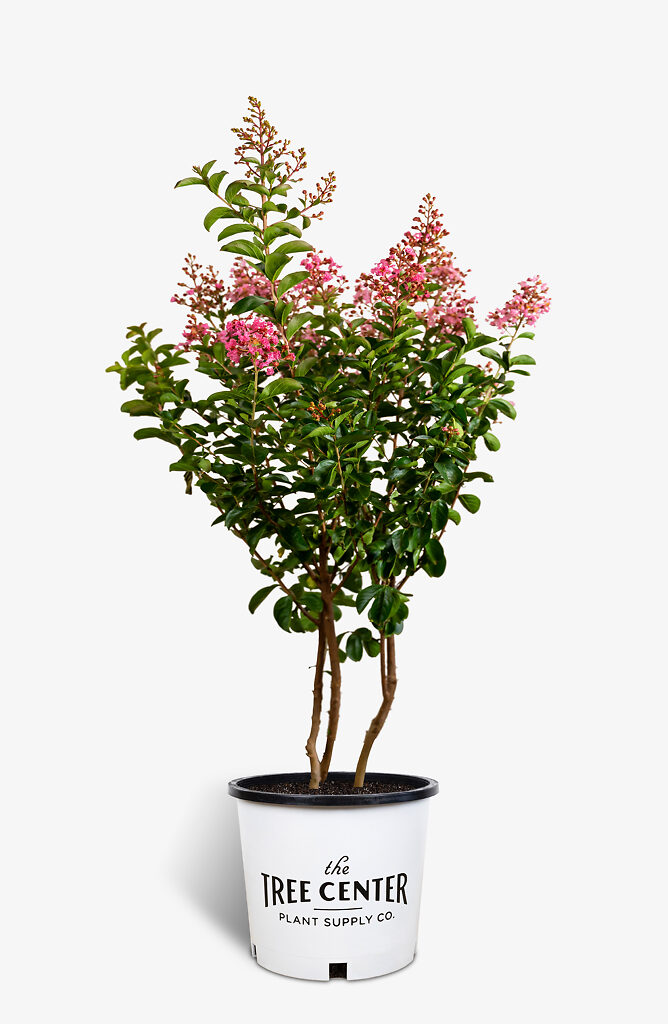
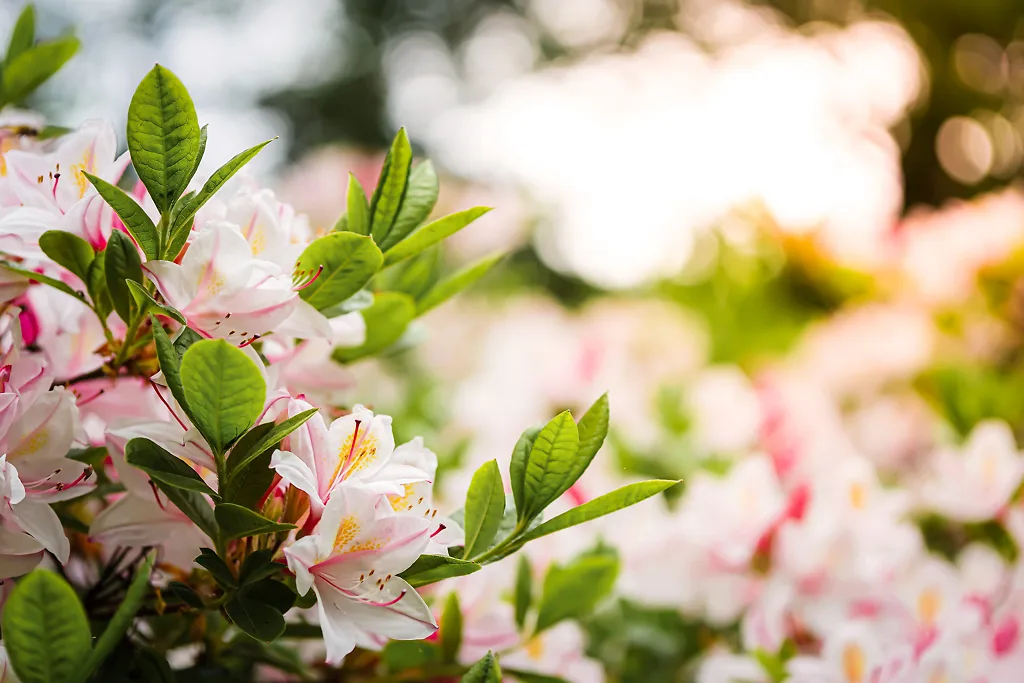
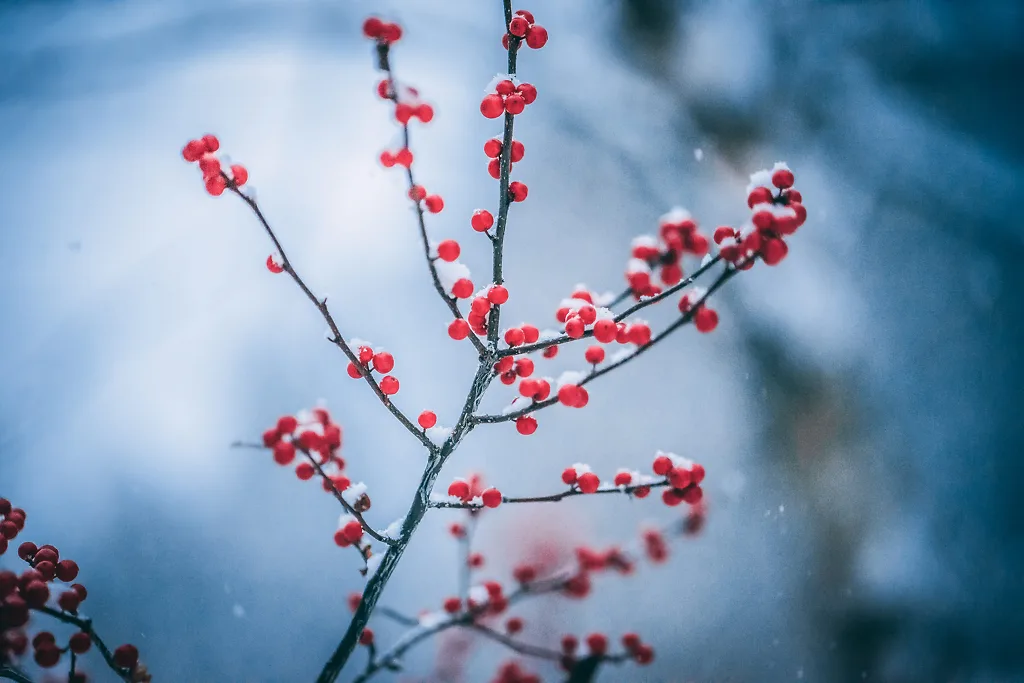






Comments 25 comments
What type of warranty do you provide on your Crepe Myrtle bushes and do you have the deep red color?
INTRESTED IN CRAPE MYRTLE TREES.
INTRESTED IN CRAPE MYRTLE TREES.
What zone do crepe myrtles fo well in
My area is cohntry andfull of deer. Any extra precautions on keeping deer away from my crepe myrtles?
I woul like to buy a red crape myrtle tree for a friend of mine leaving in Lugano ( Swisse) where can I find it? Please let me know by return
It is a present for my friend. Thank you
We ordered 3 crape myrtles and planted near the end of May approximately. I recall reading in your material about fertilizing about 5 to 6 weeks after planting. I cannot gind in your planting instructions what we are to use for fertilizing again.
Please let me know what it is we are to use.
The sooner the better would be helpful as we are at the 5 to 6 week marker to fertilize again.
Thank you.
When is the best time of year to plant a crepe Myrtle? We live in North Carolina.
Is it better to cut off the flower heads after the leaves fall in the fall or leave them for better cleaner growth in the Spring?
Is it better to cut off the flower heads after the leaves fall in the fall or leave them for better cleaner growth in the Spring?
A really nice guide…..can’t wait till our Crape Myrtle arrives Healthy and ready to plant!
Thanks, Clyde Hardesty
Last sept. I planted a crape Myrtle , it is doing good but the bottom leaves are turning yellow with red in them. I’m praying it will be ok. It has a lot of buds on it. But hasn’t blooomed yet. I see them every year at the shore and I just love their beauty. I live in Harding pa.
Please give me the information I would love to order a tree can I please get the address
Will this tree do good in soil that is wet a lot
How big should the container be? I live in a townhome and am limited as to what I can plant. I would love to have a Crepe Myrtle on my patio but didn’t know how large of a container to use. The area where I would put it is approximately 5’x6’. How fast will they grow?
Thanks for any info
I would like to keep my large crepe Myrtle from blooming…it makes a big mess on my patio , the berries fall on the patio & stain the patio…it’s a constant clean up. I like the tree for the leaves & shade but not the blooms because of the problem.
Can any variety of crepe myrtle be grown in a pot or must it be a dwarf or miniature species?
This was great information. Can u put three crepe diff colors in one hole?
Is there a method for growing my Crep Myrtle higher (to look more like a tree? ) keeping the leaves and flowers more towards the middle and top.
First time we’ve seen Crep Myrtle’s was in Charleston S.C. and they’re all gorgeous trees lining the road towards the Battery. We just fell in love with them.
Thank you for your attention
Mark
Is there a method to growing a Crep Myrtle into a tree instead of a Bush looking plant? Like the trees in Charleston South Carolina on the road towards the Battery.
Just fell in love with them.
Thank you for your feedback
Mark
Excellent information.
Guide is superb.
What’s the difference in the containers. I see #3 container, #5 container. What’s the difference between them?
I want to grow crape myrtle into 8 foot tall hedge in southern Oregon. Zip code 97520 climate zone 7. Which variety would be best? Which have shorten leafless period?
Can I permanently a Natchez crepe myrtle in a large planter box? I’m in zone 8 and want the planter on a sunny patio.
I purchased 4 white crape myrtle plants in pots, Three seem to be turning yellow although they are watered daily. One is planted and turning yellow. One lost all its leaves and i now water it in the morning and evening and new leaves are coming back. It only get early morning sun and late evening sun in my yard and seems to be doing fine. Why are 3 of them turning yellow??